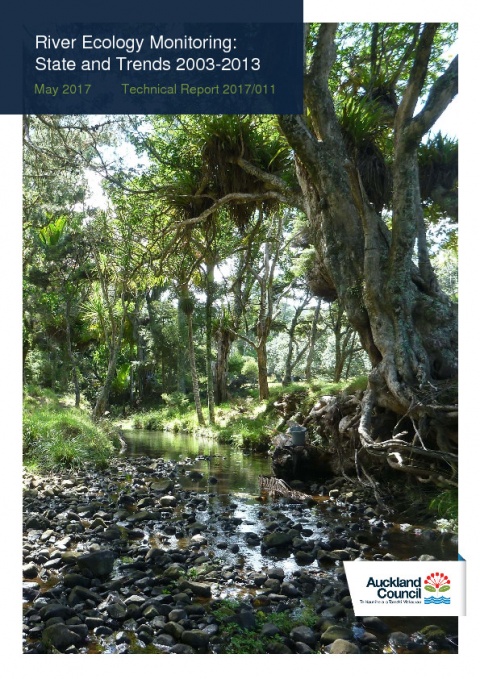River ecology monitoring: state and trends 2003-2013
Author:
Martin Neale, Emma Moffett, Peter Hancock, Ngaire Phillips, Kristi HollandSource:
Auckland Council Research and Evaluation Unit, RIMUPublication date:
2017Topics:
EnvironmentExecutive summary
Auckland Council’s River Ecology Monitoring Programme (REMP) collects macroinvertebrate data annually to assess stream ecological health. The programme is also a state of the environment (SOE) monitoring network that helps with better understanding of Auckland’s freshwater stream ecosystems and contributes to council’s environmental reporting for the Resource Management Act 1991 (RMA), the Auckland Unitary Plan, and the National Policy Statement for Freshwater Management (NPSFM). This report presents an assessment of the current ecological state of Auckland’s streams from 2011 to 2013 and an analysis of trends from 2003 to 2013.
Across Auckland 48 per cent of sites had excellent or good and 30 per cent had poor stream ecological health from 2011 to 2013. Auckland’s urban streams had the worst ecological health of any land-cover category; and were often rated as fair or poor according to their Macroinvertebrate Community Index (MCI) scores. Urban sites, Puhinui LTB and Otara LTB, had the lowest ecological health scores (<80 MCI), while reference sites, Konini and Milne, had the highest ecological health scores (>120 MCI).
Regionally, taxon richness increased while MCI decreased from 2003 to 2013. Stream health at the ‘extreme end’ of the scale, the 5th percentile, increased over time. As these were mostly urban streams, this indicated an improvement in urban stream health. However, there was also evidence of MCI values worsening at reference sites, in particular the streams West Hoe and Wekatahi demonstrated significant decreasing trends.
Exotic forestry sites had good or excellent ecological health; however, their health is tightly linked to re-forestation and clear felling cycles. Long-term trends indicate that initial disturbance effects last approximately two years, with full recovery taking up to 12 years.
Restoration projects across the region have shown mixed results, with positive ecological trends (MCI) at the Vaughan Lower site, but decreasing trends at Lucas Creek. Increasing land-cover intensity or low recruitment rates may be limiting restoration success at Lucas Creek. Continuing to monitor such sites in an effort to understand what drives successful restoration will be a priority for Auckland Council.
Auckland Council technical report, TR2017/011
May 2017
